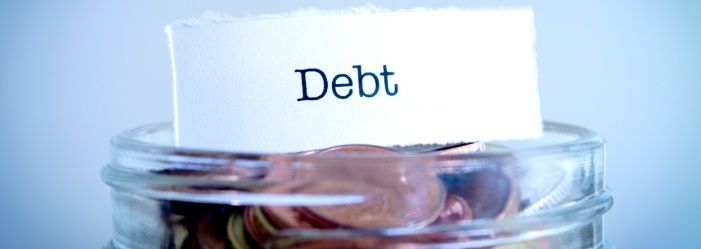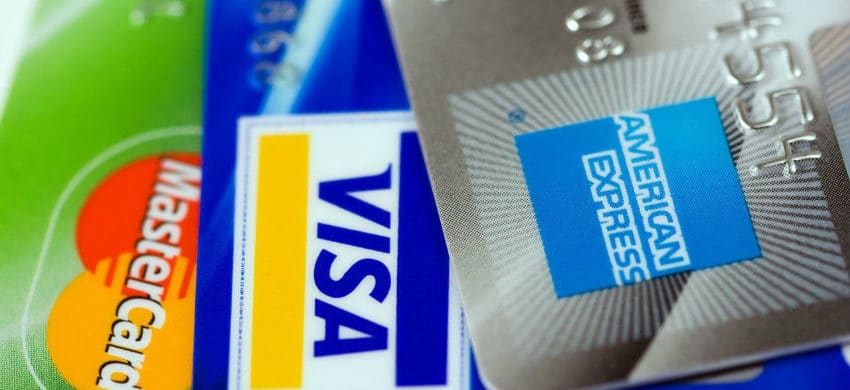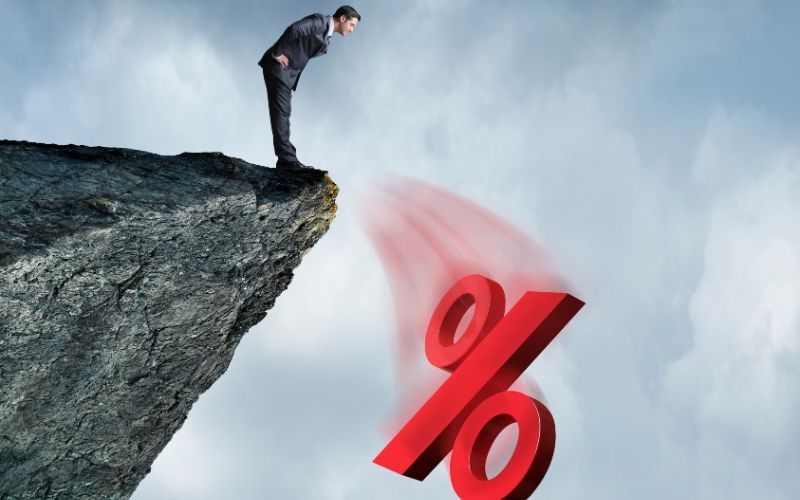Last Updated: March 26, 2024
Defining Consumer Debts

Disclaimer: We are not qualified legal or tax professionals and are not giving advice. Always speak with a qualified professional before making any legal or financial decisions.
Understanding the landscape of debt is crucial for navigating personal finances wisely. Whether it's the thrill of buying your first home or the necessity of a student loan for education, debt is a common thread in the fabric of American financial life.
However, not all debts are created equal. From secured loans backed by collateral to unsecured debts reliant on creditworthiness, each type of debt carries its own set of rules, risks, and opportunities.
In this guide, we'll explore the main types of debt, secured, unsecured, revolving, and installment and delve into specific debt products like mortgages and credit cards.
Our goal is to arm you with knowledge, enabling you to make informed decisions about managing your debt effectively and strategically enhancing your financial health.
Don't want to read through? Speak to a
debt specialist right now.
What is Debt?
The simple definition of debt is the amount of money borrowed to allow for purchases. If you look at Americans by age, you’ll find that each age group has a unique debt structure.
People under 35 average about $67,400 in debt with 20% of that credit card debt and 21% as student loans. This age group spends about 40% of their monthly income on discretionary spending – non-essential items like entertainment.
People between 35 and 44 average $133,100 in debt. Most of that is mortgage debt and about 50% of people in this age group have credit card debt. Student loans also contribute to their debt.
The next age group from 45 to 54 has the most debt, at $134,600. Their debt is generally similar to the previous group but with less student loan debt.
Within the 55-64 age group, debt drops to $108,300. Between 65 to 74, debt drops to $66,000 with much of that credit card debt. By age 75, debt is generally $34,500. Within this group, workforce participation has increased by just under 10%. Experts speculate that many people are working after retirement in order to cover medical costs or because they have no retirement savings.
Get your FREE consultation with a debt expert today! We can help you understand all your options.
What Are the Different Types of Debt?
In the previous section, we mentioned several kinds of debt, including student loan debt, credit card debt and mortgage debt. All debt is classified into four different types of debt.
- · Secured debt – this is debt that has an asset backing it. If you fail to pay the loan, the asset can be seized in exchange. This type of debt can include car loans.
- · Unsecured debt – this debt has no collateral. Instead, you agree to repay the money. If you don’t, the lender can sue to recover the money. These debts can include credit cards, membership contracts, and medical bills.
- · Revolving debt – a revolving debt is one where you have a limit and can spend up to that limit. You need to make payments that vary based on how much you have spent. This can be either secured (home equity line of credit) or unsecured (credit card).
- · Mortgage – a mortgage is a form of secured loan with the real estate acting as the collateral.
- Some of these debt types are considered “good” debt, while others are considered “bad” debt. What makes them good or bad and why?
Good Debt vs Bad Debt
Good debt is debt that helps you manage your finances and build wealth while allowing you to buy what you need and to handle emergencies. Bad debt is anything that decrease in value as soon as you buy it.
Examples of good debt includes mortgages, home equity loans, student loans, and small business loans. These loans can help you improve your life and should help you in the future. Of course, each of these loans can be a bad debt if they are not used properly. Buying an affordable house gives you somewhere to live while it hopefully increases in value. However, beware that buying too much house can be a very bad thing – think about the housing crash in 2007.
A home equity loan or line of credit (HELOC) can be a great way to pay off higher interest credit card bills or to make home improvements that increase the value of your home. Of course, you have to own a house with equity! Only use this loan as much as you can afford because the downside to using a HELOC is that your home is the collateral and it can be foreclosed on if you don’t make your payments.
Student loans can be very problematic. Education or additional training is a great opportunity. You can increase your earnings and improve your employment options. The secret is to balance your future potential income against your student loan debt. Going to an incredibly expensive school for a degree in something not very lucrative is not very wise. Laying out huge amounts of money to get an education that won’t repay you is a career path you may want to think carefully about.
A small business loan can be a terrific way to start your own business and create your own future. Having a good plan, the desire to work really hard, and some incredible luck can make a small business loan a fabulous idea.
Bad Debt
Bad debt includes anything that doesn’t increase in value. This includes clothing, appliances, entertainment, and vehicles. Bad debt also includes credit cards, payday loans, and automobile loans.
Most Americans have at least $2,000 in credit card debt and most households have a credit card debt of at least $15,000. Credit cards cost money for the convenience of using them. You pay finance charges, annual fees, late fees, overcharge fees. Plus the interest rates are generally high. If you use your credit card and do not pay it off in full each month, everything you buy is a lot more expensive when you add on interest and other fees.
Payday loans can be a very bad idea. Those short-term loans against future earnings come with high interest rates and finance charges. You may end up paying 400% a year in fees. This means for every $100 you buy you would repay $500!
Auto loans are a bad debt but also something most Americans need. As soon as you drive the car off the lot, the car loses value. Buying a car that is practical and with decent interest rates is a bad debt that you might actually need.
How Pacific Debt Can Help Reduce Your Debt
If you have too much unsecured debt and you are struggling with the minimum payments, Pacific Debt Inc. can help reduce your debt by a substantial amount. Pacific Debt is a debt settlement company that works directly with your creditors on your behalf in order to reduce your debt. Your initial phone call is 100% free, and our debt experts will explain your options so you fully understand them.
Our debt settlement program can take anywhere from 24-48 months to complete depending on your current financial situation. However, if you are considering bankruptcy or are drowning in debt, give us a call immediately to go over your options.
Understand Medical Debt
Medical debt has become increasingly common in recent years. Over $81 billion in medical debt appears on consumer credit reports. But medical debt differs from other types of consumer debt in some key ways:
- Medical debt is often incurred unintentionally due to a health emergency, unlike debt taken on willingly like student loans or mortgages.
- Medical bills can have errors that lead to disputes with insurance companies. It may take time to resolve the real amount owed.
- There are more protections around medical debt for consumers. Your credit score cannot be negatively impacted while your bill is still being negotiated with your insurance provider.
There are options for managing medical bills you cannot afford to pay all at once:
- Many hospitals and healthcare providers are willing to arrange payment plans. These allow you to pay off your bill over time with smaller recurring payments. Discuss options before your bill is sent to collections.
- Non-profit credit counseling services can negotiate reduced payments or rates for medical bills and provide advice at little or no cost. See our blog post on finding reputable credit counseling services.
Paying off medical debt will help improve your credit. Get tips in our article on techniques for paying off debt faster.
The High Cost of Credit Card Debt
Credit cards offer the convenience of buying now and paying later. But with interest rates averaging around 16% APR, using credit cards can get very expensive very quickly.
Here is how credit card companies calculate your interest each month:
- They apply your monthly interest rate to your average daily balance. Your average daily balance is the total amount you owe each day of the billing cycle, divided by the number of days.
- Any new purchases begin accumulating interest right away unless you pay off your full statement balance. Many card issuers apply interest daily.
- Late fees, annual fees, overlimit fees, and foreign transaction fees can all drive your costs even higher.
To pay credit cards off faster:
- Pay more than the minimum whenever possible. If you only pay the minimum, it can take years longer to pay off your balance.
- Consider using a balance transfer card with a 0% introductory APR period to halt interest for some time. Learn more in our post on balance transfer strategies.
- Stick to using credit cards only for purchases you can afford to repay quickly. To limit overspending, check out our budgeting tips.
Myths vs. Facts on Debt
When struggling with debt, it's easy to fall for common misconceptions. However, knowing the facts about debt can help you make wise financial choices.
- Myth: Your credit score only matters if you plan to borrow money soon.
- Fact: Your credit score affects much more, including insurance premiums, apartment rental decisions, and job offers. Maintaining good credit is crucial even during debt-free chapters of your life.
- Myth: Using your savings to pay down debt is always the way to go.
- Fact: It depends on the interest rates of your different debts compared to what you earn on your savings. In some cases holding onto emergency savings instead of paying extra on debt gives you more security.
FAQs
Conclusion
Whether secured or unsecured, revolving or in fixed installments, all debt is not created equal. Mortgages and student loans can pave the way to reaching your dreams if managed properly. Meanwhile, credit cards and payday loans can quickly snowball out of control.
Avoid burdening yourself with bad debt associated with depreciating purchases whenever possible. But if debts do weigh you down, know there are always options - from budgeting to credit counseling to consolidation.
The first step is getting clarity. Understanding the different debt types, terms, and impacts allows you to view money owed as a tool rather than a burden. Knowledge builds the foundation to make financial choices that serve your needs and values.
Pacific Debt, Inc.
Pacific Debt Inc. is one of the leading debt settlement companies in the US. We can help you understand your options and whether or not debt settlement is your best option. If it is not, we can refer you to a trusted partner who may be more appropriate for your specific situation.
If you’d like more information on debt settlement or have more than $10,000 in credit card debt that you can’t repay, contact Pacific Debt, Inc. We may be able to help you become debt-free in 2 to 4 years and we have settled over $250 million in debt for our customers since 2002. Pacific Debt, Inc. is accredited with the Consumer Debt Relief Initiative (CDRI) and is an A+ member of the Better Business Bureau. We rate very highly in Top Consumer Reviews, Top Ten Reviews, Consumers Advocate, Consumer Affairs, Trust Pilot, and US News and World Report.
Pacific Debt is currently providing debt relief coverage in the following states:
Alabama, Alaska, Arizona, Arkansas, California, Colorado, District of Columbia, Florida, Idaho, Indiana, Kentucky, Louisiana, Massachusetts, Maryland, Michigan, Minnesota, Missouri, Mississippi, Montana, North Carolina, Nebraska, New Mexico, New York, Oklahoma, Pennsylvania, South Dakota, Texas, Utah, Virginia, Wisconsin
* Other states can be connected to one of our trusted partners
For more information, contact one of our debt specialists today. The initial consultation is free, and our debt experts will explain to you all your debt relief options.
*Disclaimer: Pacific Debt Relief explicitly states that it is not a credit repair organization, and its program does not aim to improve individuals' credit scores. The information provided here is intended solely for educational purposes, aiding consumers in making informed decisions regarding credit and debt matters. The content does not constitute legal or financial advice. Pacific Debt Relief strongly advises individuals to seek the counsel of qualified professionals before undertaking any legal or financial actions.
Reduce Your Credit Card Debt By Up to Half

BBB Reviews | 4.9/5.0 Rating









 Do Not Sell My Personal Information
Do Not Sell My Personal Information